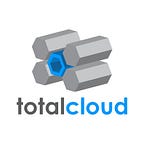Finding the Costliest AWS EBS Volume, in ~10 Seconds
Many AWS users, both novice and experts, often encounter high Amazon EBS, or elastic block storage, bills. The primary reason is that these AWS EBS volumes, irrespective of whether attached to an EC2 instances or not, continue to retain information and accrue charges when active.
Often, admins forget deleting EBS volumes attached to individual EC2s and get slashed by the bill.
It’s critical to remember that even though EBS volumes are attached to individual instances, they are billed separately. Moreover, pricing for these volumes depends on EBS storage itself (GB-months), storage used for snapshots as a backup, and provisioned IOPS (IOPS-months).
We had two volumes attached to few instances used for testing last month and were forgotten to be deleted while the instances were being terminated. We used the AWS Simple Calculator to find out the EBS pricing of these two volumes, which amounted to an estimate of ~$671 for the month!
Maneuvering in AWS Console:
While EBS volumes’ dependency as a primary storage device for an EC2 makes them dearer to users, their high pricing and the lack of quick access to pricing and usage information on the AWS console often annoys the same users. For the reason that these volumes get ignored by the same hands and eyes that created them dearly, says one of our in-house AWS experts. 🙂
Using the AWS Cost Explorer, you can definitely analyze cumulative AWS EBS cost by day, weeks, or months. However, you will not know which is the costliest individual EBS volume without hoping between EC2, EBS and Cost Explorer dashboards inside the console.
Here Comes the Magic: How to Find the Costliest EBS Volume in ~10 Seconds?
Using the TotalCloud platform’s unique selected-resource grouping feature, pan and zoom controls, and cost analysis, you will know which is the costliest EBS volume in a matter of just ~10 seconds.
From the video below, you can see that after you log in to the console and turn on the cost (~7 seconds), you can compare and contrast cost of each resources & find out which is the costliest volume in ~10 seconds.
More Quick Tips:
While you have learnt how to monitor EBS volume usage and pricing easily and quickly using TotalCloud, here are few tips that can help you save EBS costs further:
Delete or reuse orphaned EBS Volumes:
EBS Volumes still exist even without being attached to any EC2 Instances, if unchecked while creating an EC2 instance or ignored after terminating an instance. Reuse available volumes and terminate orphaned volumes.
Never ignore EBS Snapshots:
EBS snapshots are billed too. Get rid of outdated snapshots that do not hold any practical value, from time to time.
Never attach oversized volumes to EC2s
The EBS volumes’ requirement must be estimated right before attaching, considering capacity, IOPS, and throughput of the application. Not to forget — the read-write access volumes of the blocks should be monitored periodically and if the throughput is low, then the EBS blocks should be downgraded.
Choose the right EBS Volume
Never choose provisioned IOPS SSD (io1) volume type for normal EC2 instances; unless the applications are mission-critical and needs more than 10000 IOPS or 160 MiB/s of throughput per volume.
If you are interested in getting more quick help on monitoring your AWS resources, sign-up for TotalCloud.io and experience easy visual cloud management.
Originally published at blog.totalcloud.io on May 24, 2018.
